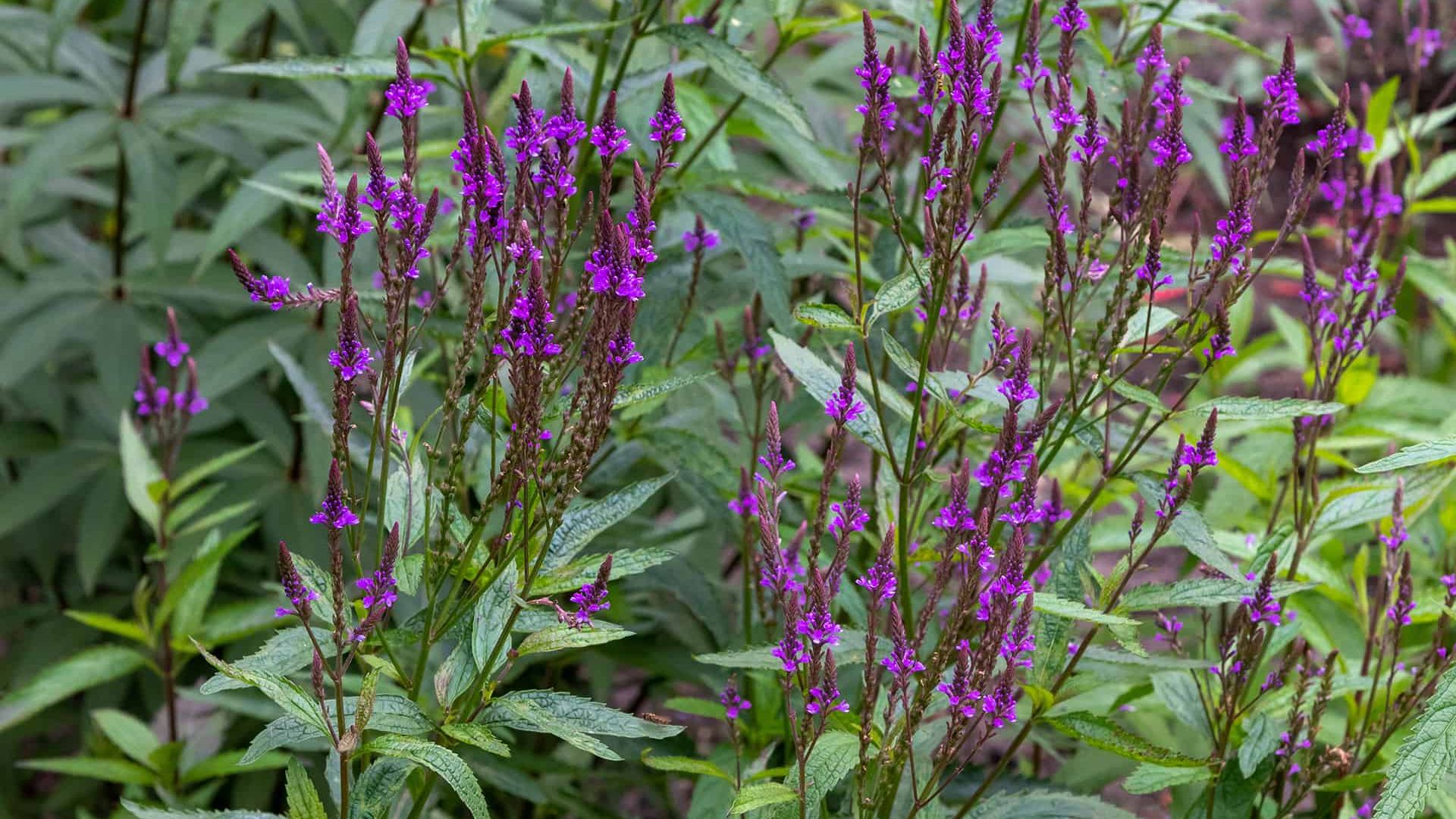
Blue Vervain Uses and Plant Monograph
When I met blue vervain, it was love at first taste…
I was in the garden at the California School of Herbal Studies, and this elegant plant won me over with their dainty purple flowers and elegant stalks that towered over the nearby garden beds. My classmate Tasha Greenwood, an herbalist who wrote the Irish moss plant profile on HerbMentor, suggested I try a leaf. So I plucked one of the small serrated leaves off the stalk, and wow it sure was bitter! I regularly eat dandelion greens and love a hoppy IPA, but this was a whole other level of bitterness with a little hint of acrid. With such a strong taste, I knew that this herb must be full of some pretty powerful constituents. Sure enough, Tasha explained to me how blue vervain is a fantastic herbal ally for soothing anxiety with racing thoughts — a mental state I am all too familiar with. As I chewed on that bitter leaf I noticed how my normal stream of anxious thoughts began to dissipate and the tension in my body started to melt away.
I was amazed at how quickly blue vervain soothed me, and ever since then I’ve been absolutely head over heels for this bitter plant. In fact, blue vervain is one of the herbs I reach for most in my home apothecary.
Now before we dive into more of the benefits of blue vervain, let’s talk about this bitter herb’s energetics…
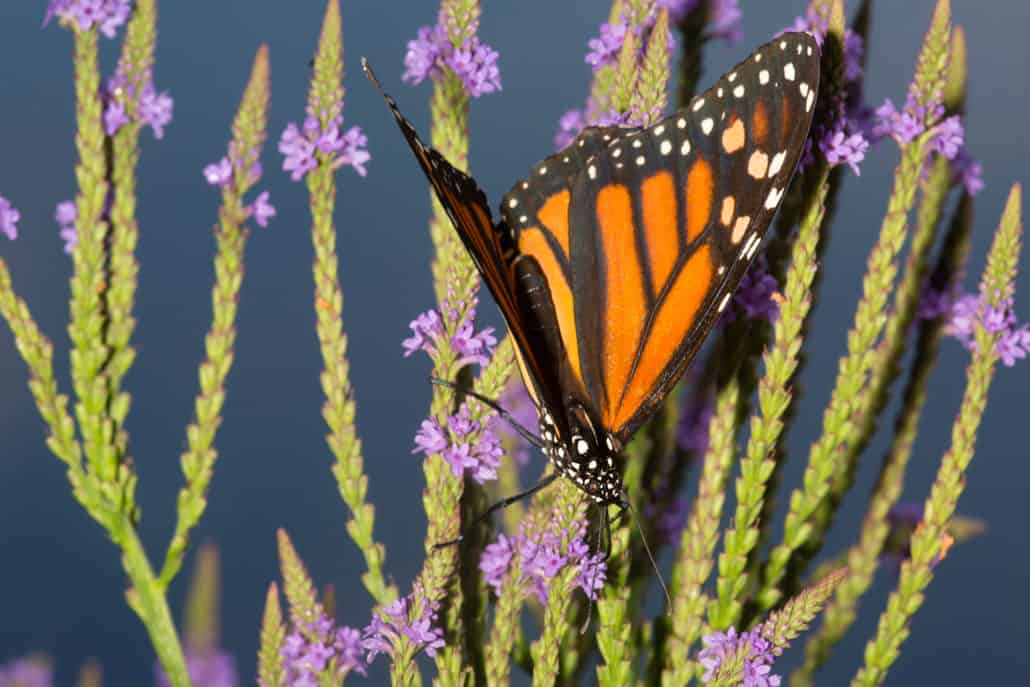
Blue Vervain Uses & Plant Profile Summary
-
Botanical Name: Verbena hastata, V. lasiostachys (Western Vervain)
-
Other Common Names: vervain, blue verbena, swamp verbena
-
Family: Verbenaceae
-
Parts Used: aerial parts
-
Energetics: cooling, drying
-
Taste: bitter, acrid
-
Plant Properties: antispasmodic, bitter, diaphoretic, emetic, galactagogue, hepatic, hypotensive, nervine tonic, sedative
-
Plant Uses: anxiety, excessive anger, neck/jaw/shoulder tension, insomnia, breaking a fever
-
Plant Preparations: tincture, glycerite, oil, tea
Energetics
One of the best ways to get to know a plant is to understand its energetics. Energetics tell us about temperature (whether a plant is cooling or heating) and moisture (whether a plant is drying or moistening). Once we understand energetics, we can more easily matchmake a plant to a condition. For example, if someone gets a minor burn in the kitchen, we can give them a cooling topical herb like aloe to help soothe the heat of the burn. Or if someone is suffering from constipation with dry stools, we can give them a cup of tea with moistening herbs to help bring more moisture to their GI tract.
So, what are blue vervain’s energetics? Well, like most classic bitters, blue vervain is cooling and drying. This means that blue vervain is indicated in hot and wet conditions.
Some of these hot conditions include fever, excess anger, and inflammatory neck pain. As a bitter, blue vervain also promotes a downward motion of energy: bringing on menses, easing tense shoulders, and cooling down throbbing headaches.
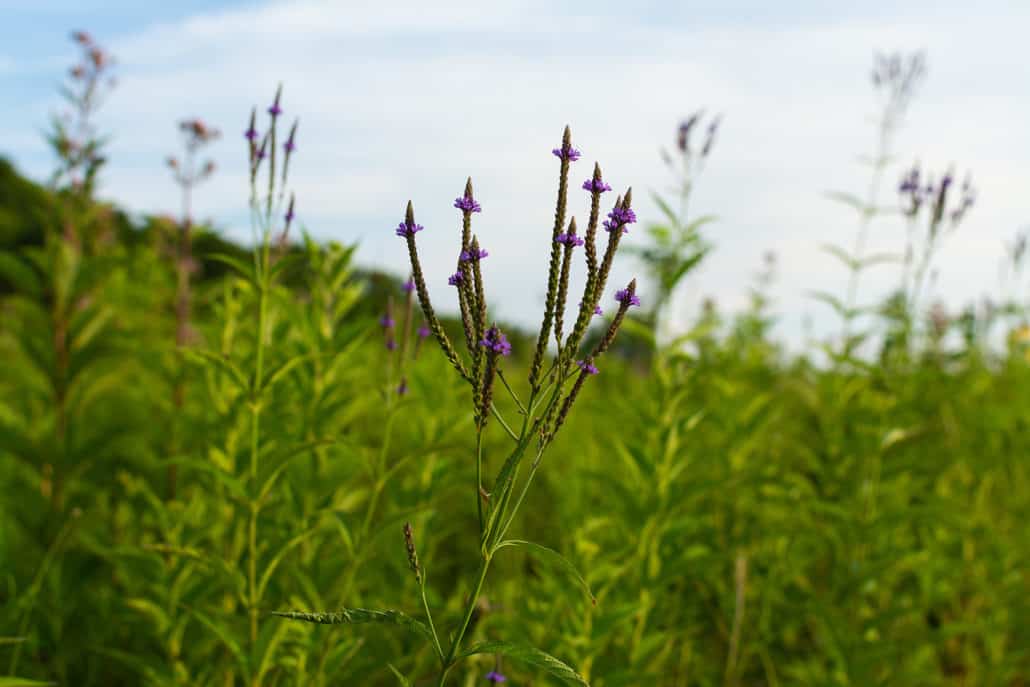
Nervous System Support
There are so many herbs that can help soothe anxiety it can be hard to know which one to choose. That’s why it’s important to get to know the energetics of each herb you work with and the personality of who each herb is indicated for. So, let’s describe the typical person who could use a helping hand from blue vervain…
The blue vervain person is a doer to the max: they take great pride in getting things done and doing them perfectly. They’re probably one of the few people in your life who actually completes that long to-do list they have in the notes app on their phone. They store tension in their neck and shoulders and often suffer from pain in these areas.
Some people may describe them as “Type A,” and they tend to proudly self-identify as a “perfectionist.” They’re often afflicted with obsessive, anxious thoughts and can fixate on one anxious thought that cycles through their brain over and over again like a hamster wheel. Their anxiety may be so intense that it disrupts their sleep, and they can lay awake in bed for hours fixating on that one mistake they made 3 weeks ago. They may also be a bit of a hot head who gets frustrated when things don’t go as planned.
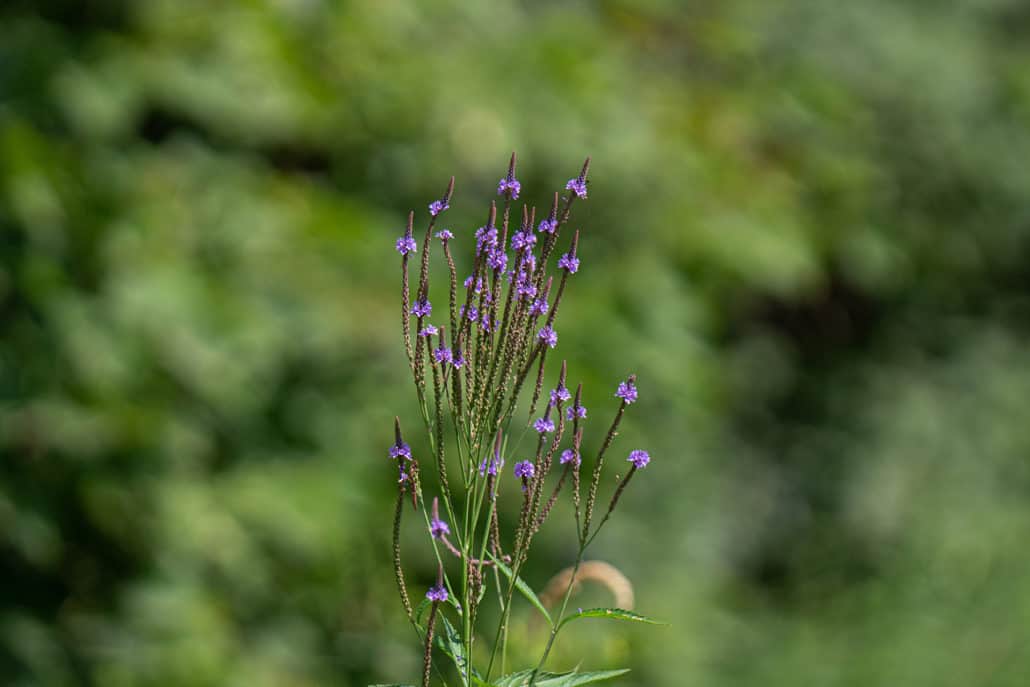
Sound familiar? If you don’t relate to this picture, chances are you probably know someone who does. When working with blue vervain for anxiety, herbalist 7Song recommends pairing it with other nerve tonics like rose, milky oats, or tulsi. And when working with blue vervain for insomnia, 7Song recommends taking blue vervain at night with more sedating herbs like hops and valerian.1
After nibbling on that blue vervain leaf on that fateful day in the California School of Herbal Studies’ garden, I took 7Song’s advice and started taking a daily tincture of blue vervain with milky oats for my own anxious, racing thoughts. Working with blue vervain and milky oats as a daily tonic not only helped soothe my anxiety, it also helped reduce the occurence of my insomnia and promoted more deep sleep. It’s now one of my go-to herbs for my fellow recovering perfectionists who are seeking help with anxiety, insomnia, and relinquishing just a tad bit of control in their lives.
If you want to learn more about blue vervain and the nervous system, check out Thomas Easley’s episode on the nervous system in his Radicle Herbal course. Blue vervain is also one of his go-to herbs for burnout and nervous system exhaustion.2
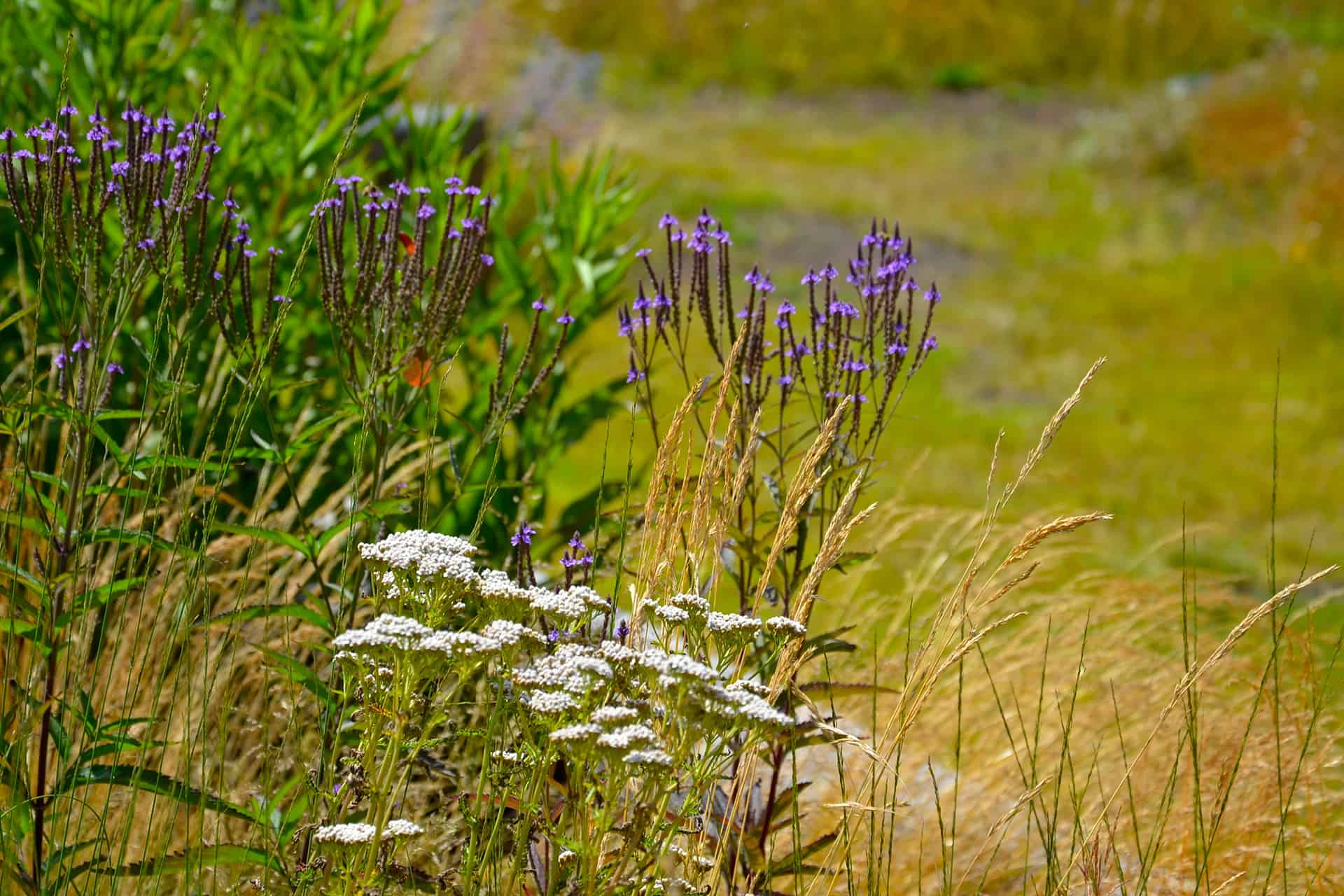
Neck, Shoulder, and Jaw Tension
As I noted above in the typical “blue vervain person” description, blue vervain has a knack for soothing neck and shoulder tension. Blue vervain is antispasmodic, and it is particularly indicated for muscle tension that stems from stress and anxiety. As a cooling bitter, it also helps bring pent up energy downward.
A dropperful of blue vervain can almost act like a pressure release valve, helping tense shoulders drop down a little lower and neck muscles release tension too. I also call on blue vervain when I notice myself grinding my teeth at night, and I have found it incredibly effective at relaxing jaw tension too.
Digestion
I would be remiss if I didn’t mention blue vervain’s effect on the digestive system. As a bitter, blue vervain activates the bitter receptors along the body’s G.I. tract, which promotes better absorption and overall digestive function. Activating these bitter receptors can also stimulate appetite. As an herb that calms the nervous system, we can call on blue vervain when someone is experiencing anxiety that makes their appetite decrease or disappear.
To learn more about the connection between the digestive tract and the nervous system, you can dive into the enteric nervous system in my catnip plant profile here.
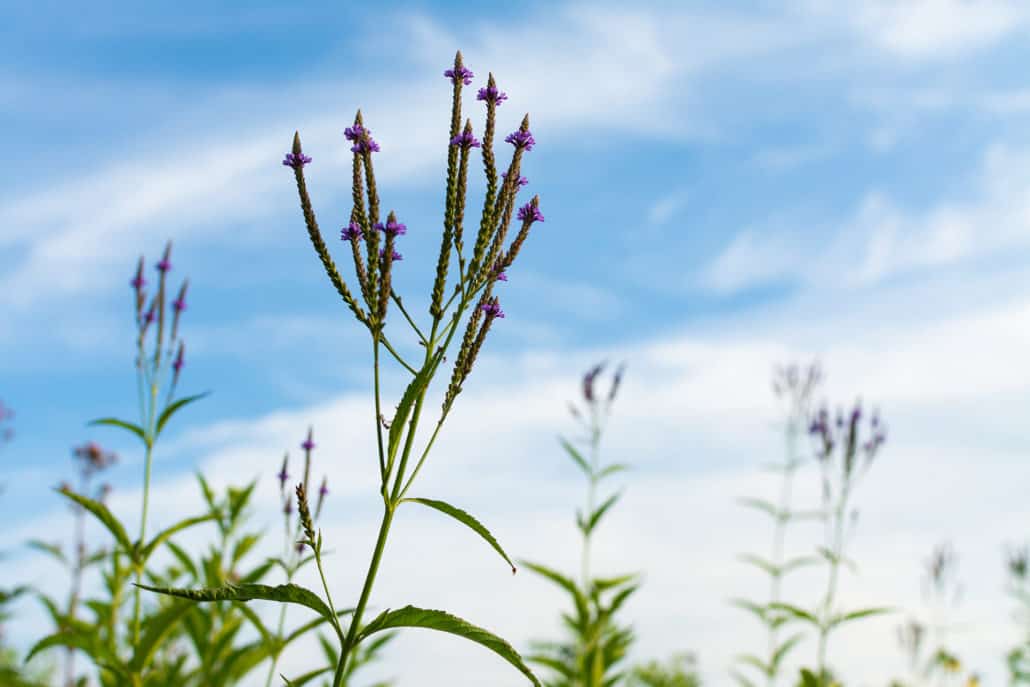
Breaking a Fever
If you’re feverish, sipping on a hot cup of blue vervain tea can help bring down a fever by promoting diaphoresis (sweating) that releases heat and cools the body. Blue vervain will also soothe any musculoskeletal aches and pains, especially in the neck and shoulders. When working with blue vervain tea, it’ key to remember just how intensely bitter this herb is. In fact, blue vervain tea is so bitter it can cause nausea in some folks or even vomiting when ingested in excess. So, if you opt for blue vervain tea to break a fever, it’s important to start slow and dose it correctly. See the dosage section below for more specific instructions.
If you’re looking for other herbs to break a fever that don’t hold the same risk of nausea, you could opt for hot chamomile or yarrow tea.
Constituents
Blue vervain contains mucilage and iridoids (verbenin, verbenalin, and bastatoside). Iridoids have a general anti-inflammatory effect on the body and can have nephroprotective and hepatoprotective actions in the body.3 Blue vervain also contains essential oils, even though it has very little scent.4
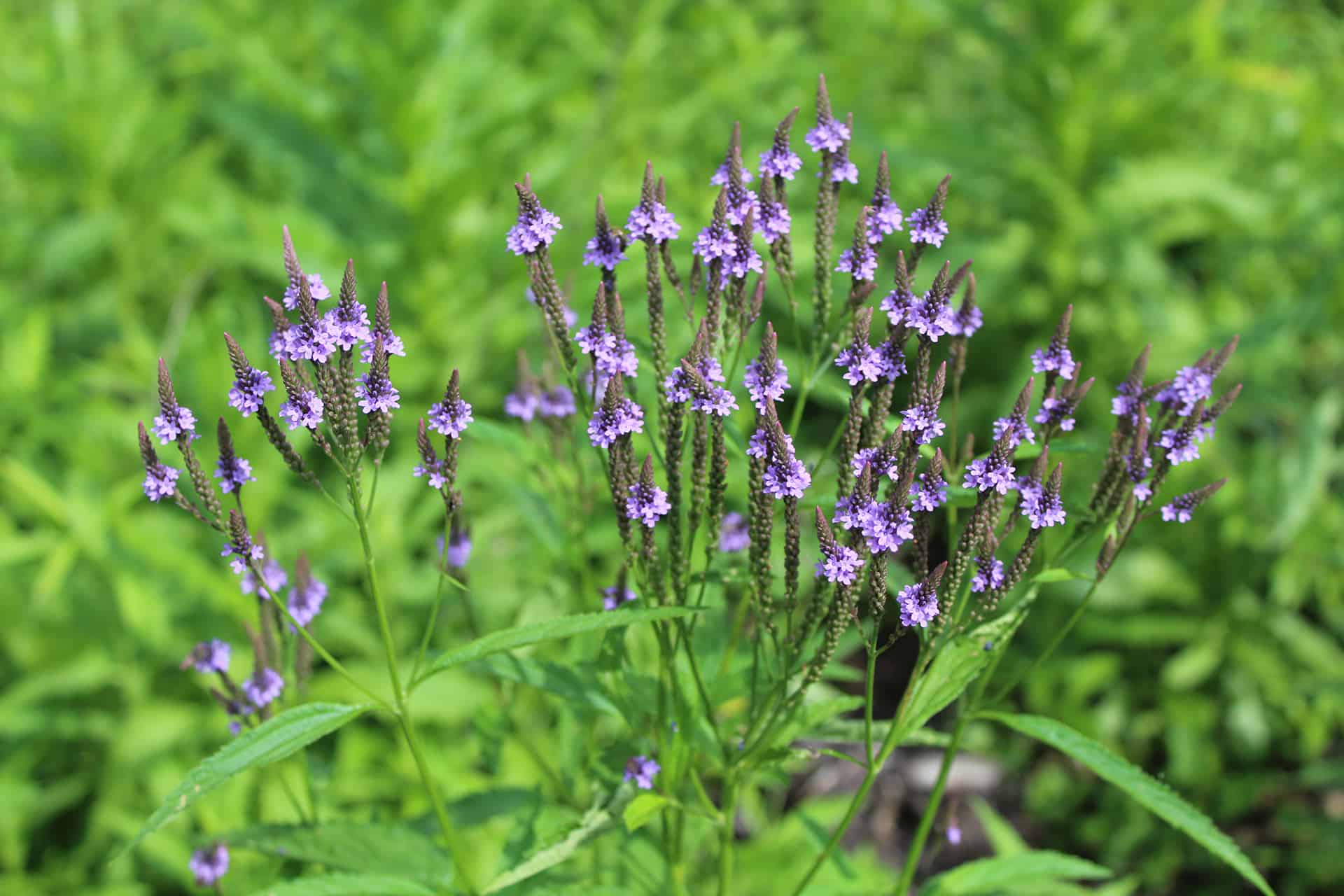
Botanically Speaking
In the U.S., blue vervain grows on the East coast and Western vervain grows on the West coast. These two species can be used interchangeably, and both species can grow well in a garden on either coast. Blue vervain grows in a variety of habitats but mostly prefers wetland environments like marshes and near streams and ponds.5
Blue vervain is a perennial that can grow upwards of 5 feet.6 Multiple stems branch out and upwards from the primary stalk. Small purple flowers grow in spikes on these branching stems. The flowers begin to appear first at the base of the spike and then continue to bloom upward towards the tip of the spike over time. Blue vervain’s leaves are green, long, and narrow with serrated edges.
Plant Preparations & Harvesting
When harvesting blue vervain, it’s best to harvest the aerial parts when the plant is fully in bloom. Tincturing the fresh herb rather than dried herb is generally preferred and considered more potent. Unless you are trying to bring down a fever, I recommend opting for a tincture or glycerite rather than a tea because this herb is so bitter that it can be rather unpalatable and even nauseating in tea form.
Dosage Suggestions
- I typically follow herbalist David Hoffman’s dosage suggestions for blue vervain tincture, which are as follows: 1:5, 40% 2.5–5 ml 3 times daily
- If you want to enjoy a sweeter-tasting, alcohol-free extract of blue vervain, you can create a glycerite at: 1:5, 60% 2.5–5 ml 3 times daily7
- If preparing tea to induce sweating and bring down a fever, I follow Tasha Greenwood’s advice, which is 1 teaspoon herb : 1 cup tea steeped for 10–15 minutes and taken up to three times daily.8
Please keep in mind that this tea will be extremely bitter. This intense bitterness can cause nausea (and even vomiting) in some people, so it’s important to exercise caution when working with blue vervain tea.
To create a massage oil or soothing balm for neck and shoulder tension, you can wilt the fresh leaves and flowers for a day or use the dried herb. Fill a mason jar about a quart of the way with wilted or dried herb and then pour olive oil over the herb. Stir well and let the herb macerate in the oil for 4–6 weeks out of direct sunlight. After 4–6 weeks, strain well and enjoy!
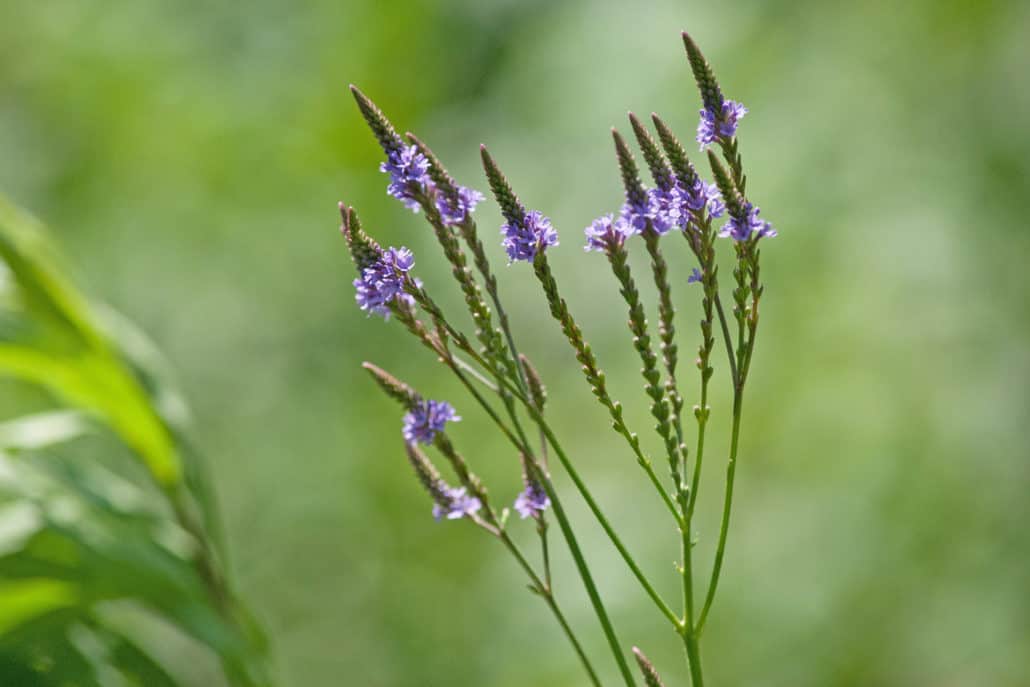
Special Considerations
Blue vervain is contraindicated during pregnancy. The Botanical Safety Handbook states that there is no scientific or traditional literature that has identified whether blue vervain is safe during lactation, but I want to note that blue vervain has been traditionally used as a galactagogue.9 There have been no herb-drug interactions recorded with blue vervain. If consumed in excess, especially in tea form, blue vervain can cause nausea and even induce vomiting, so as always it is important to follow dosage instructions.









